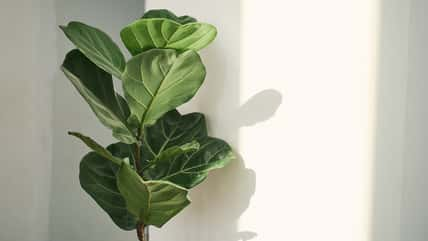How To Grow A Firestick Plant, Which Boasts Bolder Colors The More Sunlight It Receives

The firestick plant is grown as a succulent houseplant in most areas of the country. In drier regions with warm climates year-round, firesticks can be grown as a hedge or small tree outdoors.
The gorgeous plant can brighten up your space with its green pencil-like stems that turn yellow in the summer. In the winter, they will turn vibrant shades of pink, orange, and red. The more sunlight the plant receives, the bolder the colors are.
Firesticks are also known as Indian tree spurge, pencil cactus, and finger tree. They are native to Africa and are considered invasive plants in parts of Hawaii, Florida, and California.
When damaged, firestick stalks can leak a toxic milky sap that can cause dermatitis and eye irritation. So, make sure to wear long sleeves, safety glasses, and gloves when handling firesticks. They are also toxic to cats, dogs, and horses. Here is how to properly grow and care for a firestick plant.
If grown in the ground outdoors, keep the firesticks away from high-traffic areas. Simply brushing against one can make the fragile stems break and leak the poisonous sap. The best time to plant firesticks outside is in spring, early summer, or early fall.
Water the plant once a week until new roots develop. When the plant has taken root, let the soil dry completely before watering again. The plant may grow as tall as 25 feet outdoors.
As a houseplant, a firestick needs high-quality potting soil specifically for succulents. Place it in the sunniest area of your home. It won’t grow as tall indoors. Its main requirements are sunlight, fast-draining soil, a warm environment, and protection from light frost.
Firesticks do best in full sun. They thrive in fast-draining soil that is low in organic matter because it doesn’t hold as much water. If the soil is too wet, the plant will rot.
Always let the soil dry out completely before re-watering. In winter, reduce watering because this is when plant growth slows down or stops.

Jack – stock.adobe.com – illustrative purposes only
Provide the plant with hot temperatures and low humidity. It cannot tolerate freezing temperatures. If grown outdoors in a container, bring it inside when the temperatures at night drop to 50 degrees Fahrenheit.
Furthermore, not much fertilizer is needed for firesticks to grow successfully. Use houseplant fertilizer or half-strength cactus fertilizer in the spring.
With firesticks, the biggest problem to watch out for is root rot. Another common issue is too little light.
An indoor plant can look yellow and weak if it does not receive enough sunlight. You can try to supplement with a grow light.
On occasion, aphids, mealybugs, and spider mites can cause problems, but you can just spray them off with a strong stream of water.
Sign up for Chip Chick’s newsletter and get stories like this delivered to your inbox.
More About:Gardening





